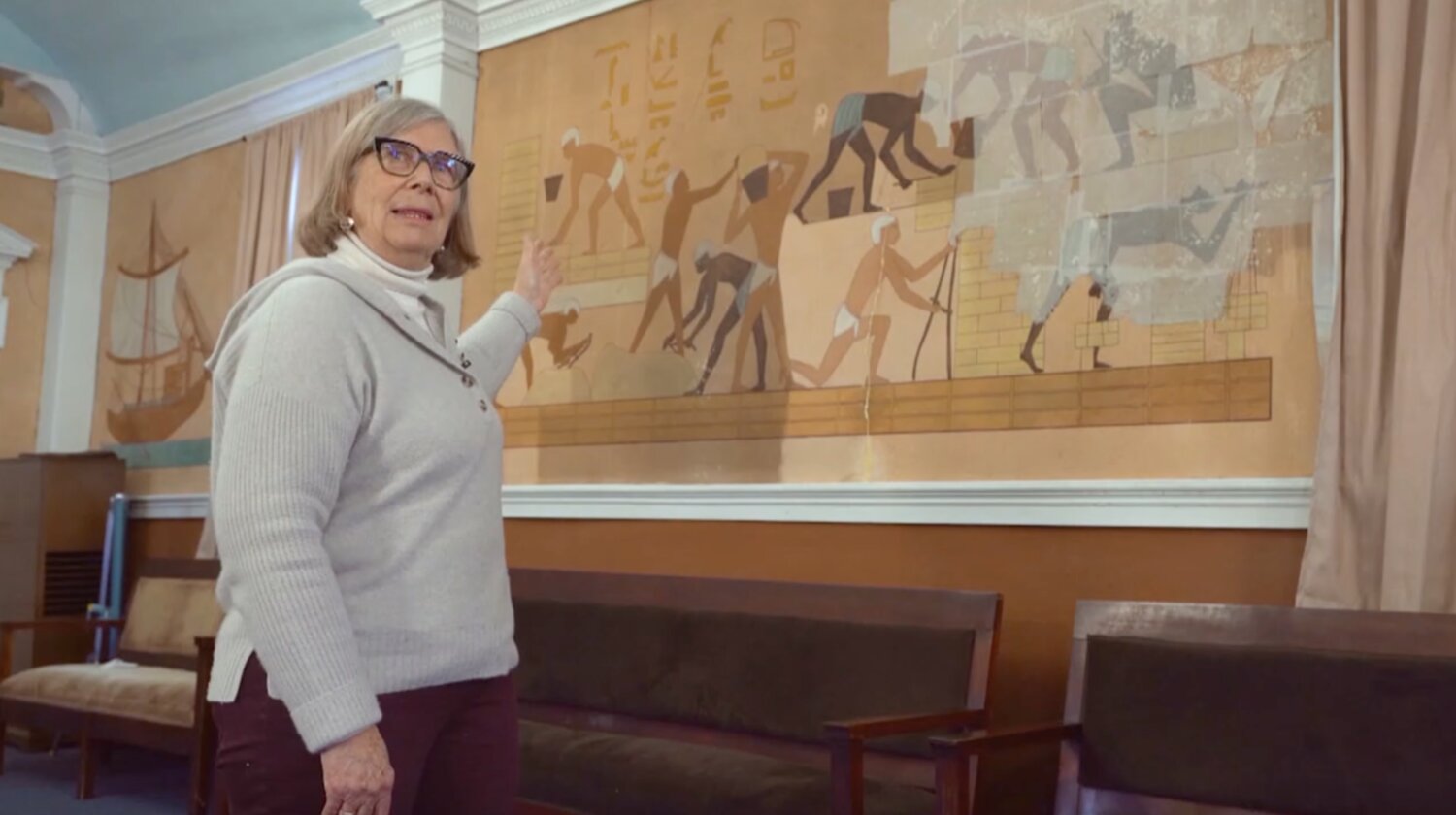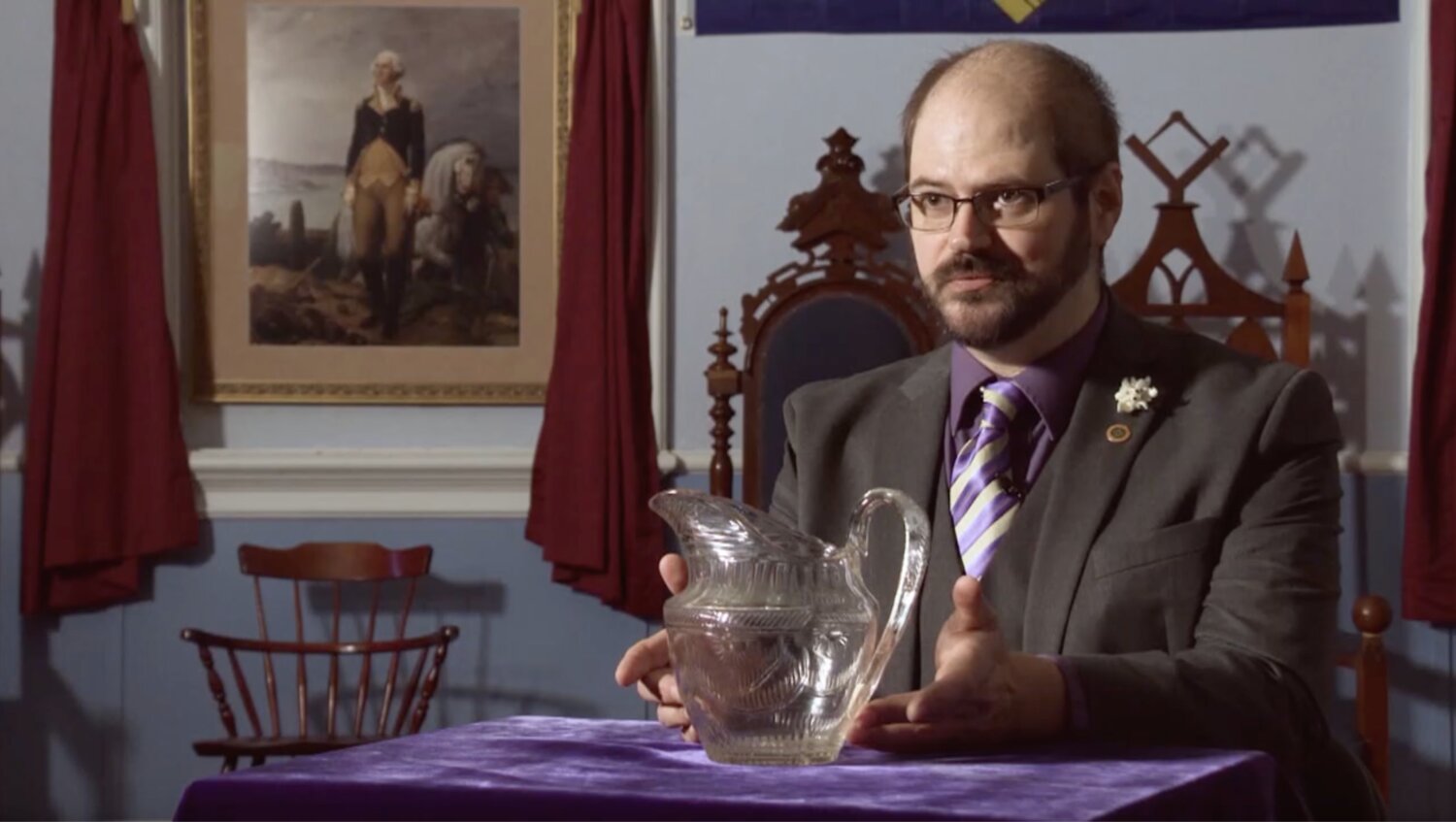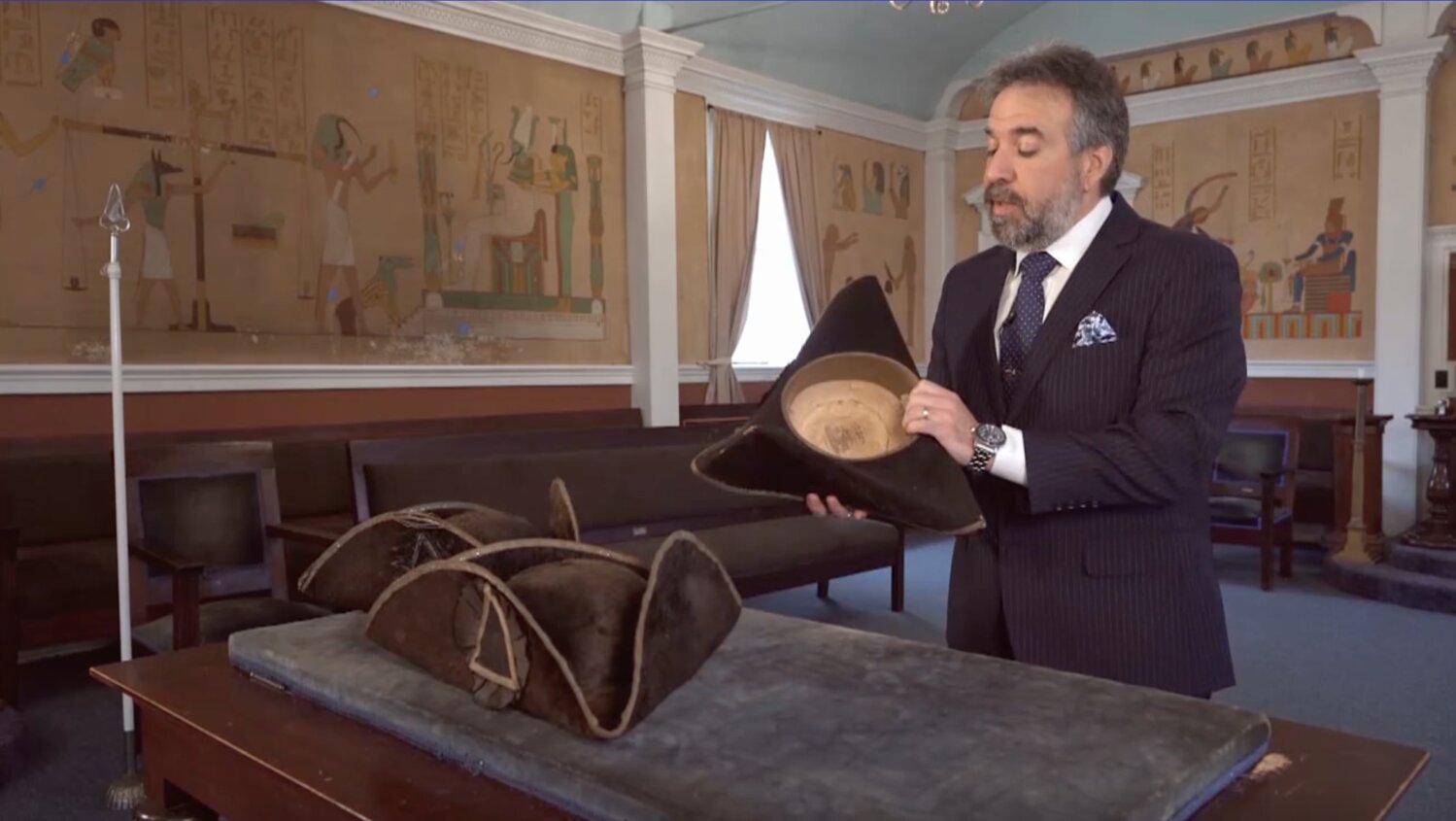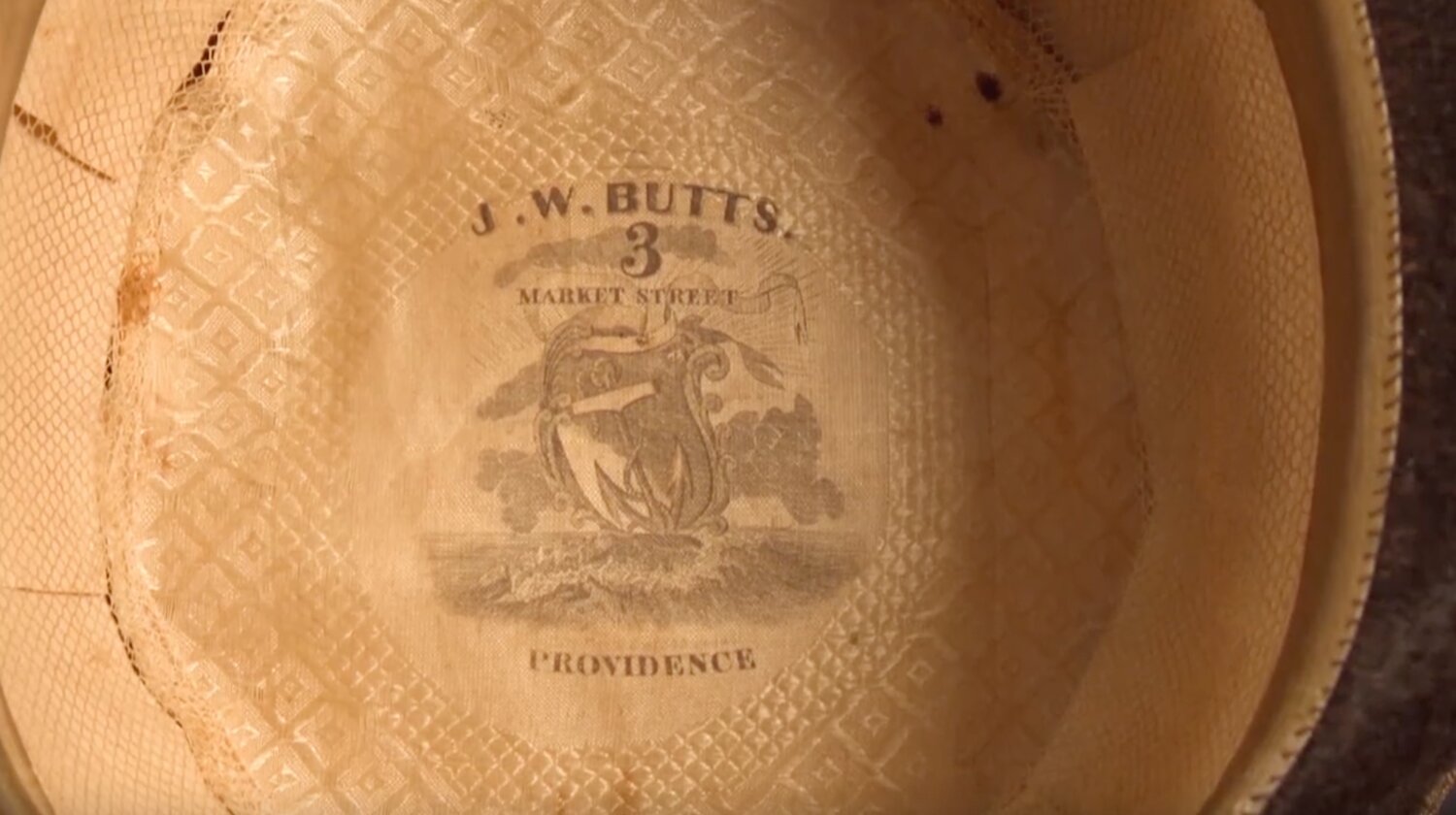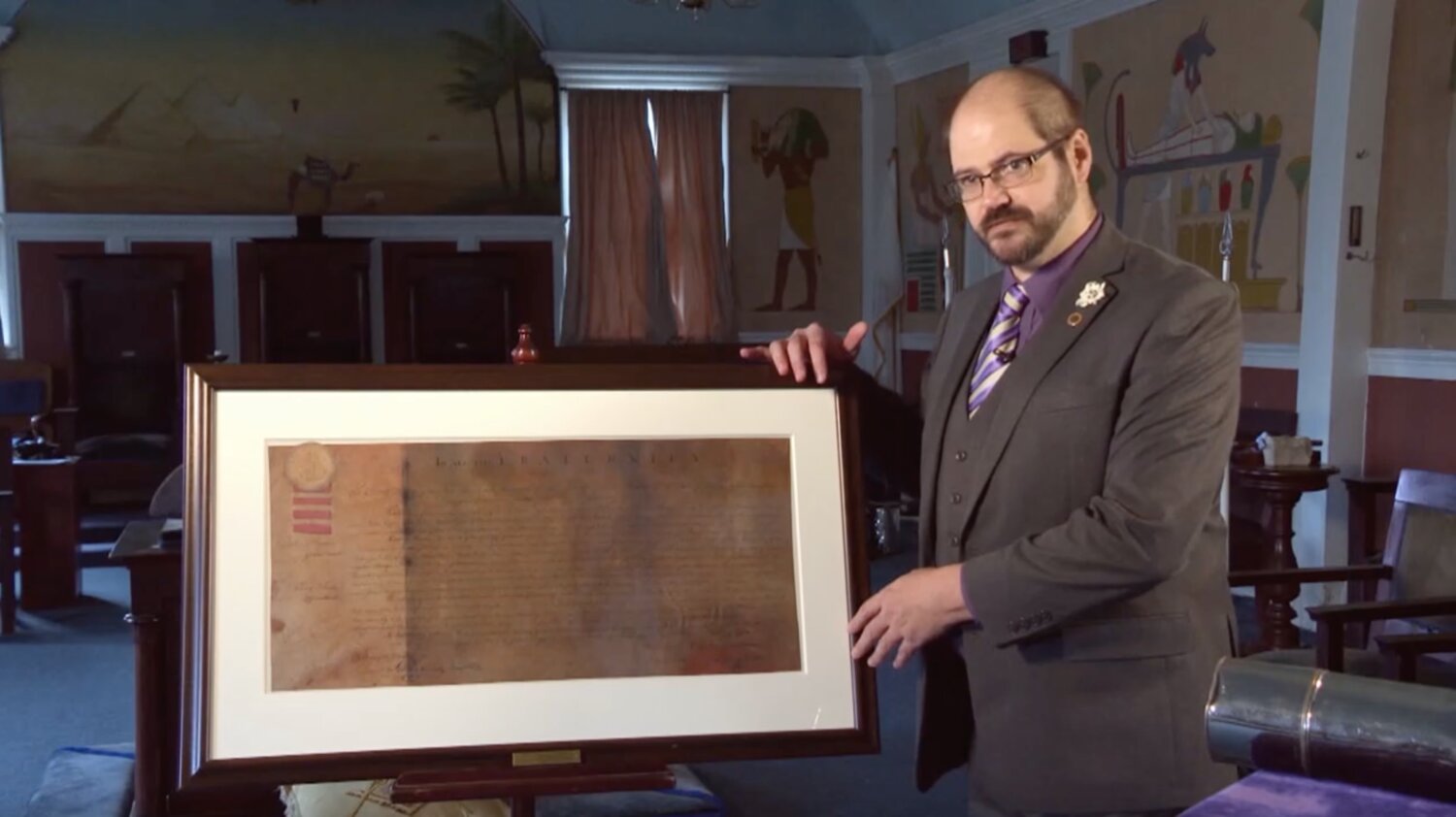Warren Masonic Lodge shows off treasures for Rhode Island PBS series
One of Warren’s most storied establishments recently got the opportunity to show off their most prized historical possessions for a Rhode Island PBS documentary team — and the officers at Washington Lodge No. 3 did not disappoint.
This item is available in full to subscribers.
Please log in to continue |
Register to post eventsIf you'd like to post an event to our calendar, you can create a free account by clicking here. Note that free accounts do not have access to our subscriber-only content. |
Day pass subscribers
Are you a day pass subscriber who needs to log in? Click here to continue.
Warren Masonic Lodge shows off treasures for Rhode Island PBS series
One of Warren’s most storied establishments recently got the opportunity to show off their most prized historical possessions for a Rhode Island PBS documentary team — and the officers at Washington Lodge No. 3 did not disappoint.
Season five, episode four of the RIPBS show, “Treasures Inside the Museum”, aired on July 19 with the second segment featuring an extensive dive into the history and artifacts contained within Warren’s masonic lodge, which has roots that go back to 1796. As the program explained, however, certain items within it pre-date even then.
“Before me here is probably our Lodge’s most prized possession,” said Steve Curria, Chaplin of the Lodge, in an interview featured on the show, with a glass pitcher sat on a purple cloth-cloaked pedestal in front of him. “This is a pitcher that was used by George Washington in the Continental Army headquarters during the American Revolution. It is…my hands are shaking just looking at it.”
Curria explained how the pitcher dates to 1775, and came to the lodge through a man named Nathaniel Phillips, who served as a quartermaster in the area for General George Washington during the American Revolution.
“He was in charge of basically moving all of the command staff equipment from one camp to the next,” Curria said. “This item was taken by him at the conclusion of the War, and it remained in his family and it was passed down through his family to his grandson, Charles Phillips, who then donated it to Washington Lodge in 1925.”
Curria said it would have been common for anyone connected to Washington to hold onto such seemingly nondescript keepsakes he used after the conclusion of the war.
“Especially at the conclusion of the War, George Washington was already a very revered, mythic figure,” he said. “Things that have any association with George Washington are sacred. And especially to us as Freemasons. Personally, George Washington is my boyhood hero, and I have to admit he’s also my adulthood hero. So to be able to see something and be this close to something he himself used is really a dream come true. This is my Disney Land, basically, for history nerds.”
Other artifacts included 18th century hats, original charter
John Miranda, Junior Deacon of the Lodge, was next up to be interviewed after delicately placing on display three tricorne hats that were originally used by the original top three officers of the lodge: the Worshipful Master, the Senior Warden, and the Junior Warden.
“These here are put into a case and very, very rarely do we ever take them out and touch them with our bare hands,” Miranda explained. “They are made of beaver pelt. These actually were made in Providence, Rhode Island in the late 1790s.”
The documentary then cut back to Curria, who spoke about how the Lodge still retains on display its original charter, which has been cleaned, restored and protected behind ultraviolet filtering glass. In the interview he is holding a copper case, which he said would have been similar to one used by one of the Lodge’s most famous members, Col. Seth Peck, to protect the document from possibly being destroyed.
“We’re told through Masonic tradition that Seth Peck, during the anti-Masonic period of the 1820s and 1830s, actually kept this charter sealed in a copper tube similar to this, but it was completely water-tight, and it was buried at the bottom of the Warren River at low tide where only he knew where it was for safekeeping during the anti-Masonic period,” he said. “Through his actions in preserving this document to us, we have it here today.”
Lastly in the segment, the documentary interviewed Alexandra Allardt, an art conservator from ArtCare Resources, to discuss the unique Egyptian mural that covers the entirety of the Main Hall in a 360-degree display. It was originally painted in 1914 by an immigrant named Max Müller. The murals, which have degraded and been discolored over time by oil and soot from torches and lamps, are in the midst of a large-scale restoration process.
“These murals were a big surprise when I found them,” Allardt said. “I’ve worked in Egypt and in Egyptian archeological sites and when I walked in here I thought, ‘My goodness, this is like going into King Tut’s Tomb on steroids.’ It’s just a fabulous surprise when you see how many of the Book of the Dead drawings are here in more than full life size all throughout the room. You’re totally surrounded by this. So it’s a fabulous, unusual, Rhode Island icon that is really undiscovered.”
The significance of local history
Steve Curria, whose interview clearly showed that those leading Washington Lodge No. 3 in the modern day have a tremendous amount of love and respect for the history of the building and its former officers, perhaps said it best when describing why something as simple as a hand-blown glass water pitcher — imperfections from air bubbles and all — can still give him goosebumps just by looking at.
“It’s just a piece of glass when you look at it, but this very object bore witness to the founding of our country, really. The struggle for our very freedoms. So to be able to have a tangible piece of that is really fascinating and it’s really powerful and it’s kind of moving,” he said. “Because there aren’t many relics that you can look at, that you can see and touch that are so connected to that very crucial period in our history when we were becoming who we would become. And it would be George Washington who spearheaded most of that.
"So this little unimpressive little glass pitcher saw some of the most momentous moments in American history.”

